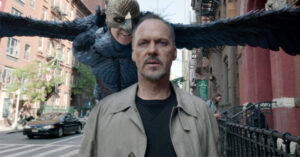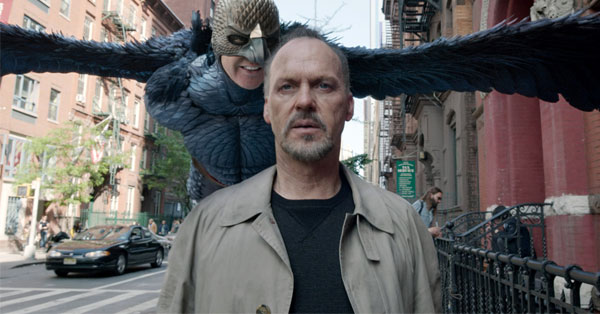What was Michael Keaton’s first acting role?
From television beginnings to Batman stardom — tracing the humble roots of an iconic actor
(By Carmichael Phillip)

The Early Days: Michael Keaton Before the Fame
Long before he became known as the man behind the mask in Batman or the critically acclaimed star of Birdman, Michael Keaton was a young performer with big dreams. Born Michael John Douglas on September 5, 1951, in Coraopolis, Pennsylvania, Keaton’s journey to stardom was far from instant. He didn’t come from a Hollywood background or acting dynasty. Instead, he carved his own path, driven by persistence and a knack for humor.
Before launching his professional acting career, Keaton attended Kent State University where he studied speech for two years. He later moved to Pittsburgh and took up work as a production assistant at WQED, a public television station, which helped him gain exposure to the entertainment world from behind the scenes.
Keaton always had a natural charisma and comedic edge, two traits that would later shape his performances. But in those formative years, the struggle was real. He performed stand-up comedy, appeared in local theater productions, and worked odd jobs just to stay afloat. It was the classic actor’s hustle.
Michael Keaton’s First Professional Acting Role
So, what was Michael Keaton’s very first acting role? That distinction belongs to his appearance on Mister Rogers’ Neighborhood in 1975.
Yes, you read that correctly. Keaton made his acting debut on one of the most beloved children’s television programs of all time. On the show, Keaton performed as a “Flying Zookeeni Brother,” a part of a circus act that appeared during the Neighborhood of Make-Believe segments.
He also worked behind the scenes on Mister Rogers’ Neighborhood as a production assistant, showing that he was already wearing multiple hats in the entertainment business — quite literally, in some cases.
“It wasn’t glamorous,” Keaton once reflected in an interview. “But it was the first time I was doing something creative and on camera. That was big for me. That gave me a taste, and I wanted more.”
Keaton’s brief yet memorable stint on Mister Rogers’ Neighborhood wasn’t exactly the kind of debut that forecasted a Hollywood superstar. But it was his first legitimate screen role, and it served as a foundational step in a long and diverse career.
From Pittsburgh to Los Angeles: Building a Career
After his initial break in Pittsburgh, Keaton decided to move to Los Angeles in search of more serious opportunities. Upon arriving, he quickly learned that there was already a famous actor named Michael Douglas (and a TV host named Mike Douglas), so he adopted the stage name “Michael Keaton” — inspired by actress Diane Keaton, though not related.
Landing roles wasn’t easy. He started with small parts, doing commercials and guest spots. His first big break came in 1977 when he appeared on the CBS sitcom All’s Fair. But it was his work on the variety show The Mary Tyler Moore Hour in 1979 that began to showcase his comedic talent to a wider audience.
“Comedy was always a big part of who I was,” Keaton said in a 2015 interview. “I wasn’t classically trained, but I knew how to make people laugh. That opened doors for me.”
These early appearances built momentum. By 1982, he landed a starring role in Night Shift, a film directed by Ron Howard, where Keaton played the eccentric and fast-talking Bill Blazejowski. The performance earned him widespread recognition and marked his official arrival as a movie star.
The Role That Changed Everything: Beetlejuice
Although Keaton had built a solid resume by the mid-1980s, it was 1988’s Beetlejuice that truly catapulted him into the Hollywood elite. Tim Burton’s dark comedy gave Keaton the freedom to unleash his full creative range.
Keaton’s portrayal of the eccentric, grotesque bio-exorcist Beetlejuice was a wild and unforgettable performance. Critics praised his manic energy and improvisational flair.
“I didn’t know what the hell I was doing at first,” Keaton admitted in an interview with The Hollywood Reporter. “But then Tim [Burton] just said, ‘Go with it.’ So I created this character using pieces of people I knew — loudmouth guys, circus barkers, you name it.”
The role earned Keaton a cult following and laid the groundwork for another pivotal role in his career.
Becoming Batman: A Risk That Paid Off
In 1989, Tim Burton cast Michael Keaton as Bruce Wayne/Batman in the highly anticipated Batman film. Fans were skeptical. Many couldn’t imagine a comedic actor playing the Dark Knight. But Keaton proved the doubters wrong.
His performance was understated, brooding, and surprisingly nuanced. Batman became a massive box office success, grossing over $400 million worldwide and reshaping the superhero genre.
Director Tim Burton once explained, “Keaton had the eyes. He could say more with a stare than most actors could with a monologue.”
Keaton returned for Batman Returns in 1992, cementing his status as a bankable leading man. Yet, despite the commercial success, Keaton chose not to return for the third installment when creative differences arose with new director Joel Schumacher.
“I just knew it wasn’t for me anymore,” Keaton told Variety. “I didn’t like the direction it was going in. And at that point in my career, I needed to do things that mattered to me.”
Reinvention and Renaissance: Birdman and Beyond
Though Keaton enjoyed success through the 1990s with films like Multiplicity and Jackie Brown, he experienced a lull in the early 2000s. But his comeback was nothing short of spectacular.
In 2014, he starred in Birdman or (The Unexpected Virtue of Ignorance), playing a washed-up actor known for portraying a superhero — a role that closely mirrored Keaton’s own career trajectory.
The performance was universally acclaimed. Keaton won the Golden Globe for Best Actor and was nominated for an Academy Award. The film itself won Best Picture at the Oscars.
Critics and audiences alike hailed his return. “Michael Keaton gives the performance of his life,” wrote Rolling Stone film critic Peter Travers.
Keaton followed up with equally powerful roles in Spotlight (2015), The Founder (2016), and a villainous turn as the Vulture in Spider-Man: Homecoming (2017), proving that he could seamlessly transition between genres and styles.
Full Circle: Revisiting Batman
In a move that thrilled longtime fans, Keaton reprised his role as Batman in The Flash (2023), returning to the cape and cowl more than three decades after his original performance.
“I was surprised at how emotional it felt,” Keaton said in a press junket. “There’s something powerful about stepping back into something that defined part of your identity.”
His return was more than a nostalgia trip — it served as a reminder of just how enduring his impact on the superhero genre has been.
Legacy of a Versatile Actor
From his humble beginnings on Mister Rogers’ Neighborhood to becoming a pop culture icon and Oscar-nominated star, Michael Keaton’s career is a masterclass in perseverance, adaptability, and talent.
His journey is filled with risks — changing his name, shifting genres, turning down lucrative sequels — but each decision was grounded in a desire to grow as an artist.
“Every step matters,” Keaton once said. “Even the smallest roles — they teach you something. That first job on Mister Rogers? That taught me how to be in front of a camera. And I’m still learning every day.”
Today, Keaton is considered one of the most respected and versatile actors of his generation. And it all began with a humble role in a children’s television show — a fitting start for a man who would go on to entertain, inspire, and challenge audiences for decades.




